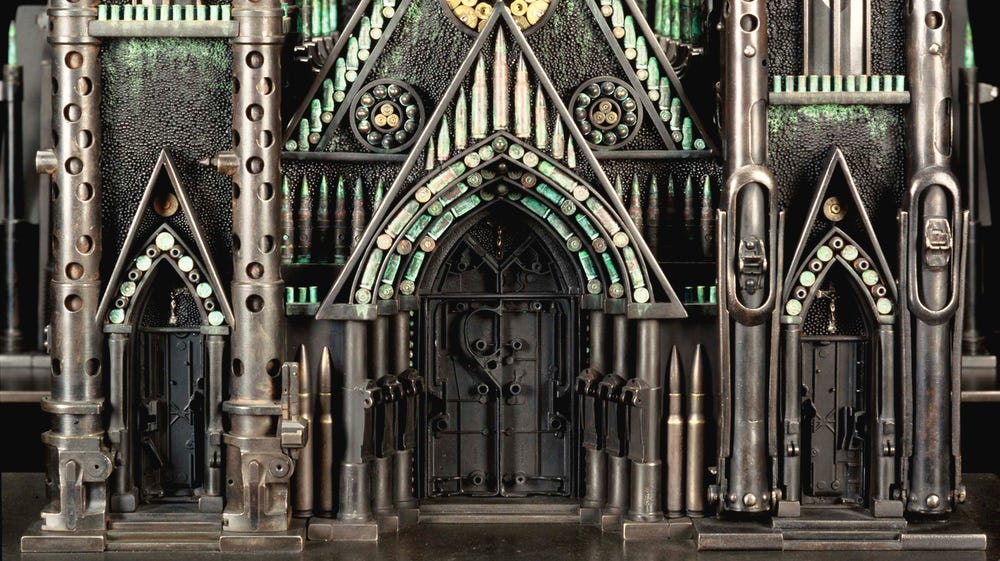Fine Arts Museums of San Francisco Announce The Acquisition of Al Farrow’s The Spine and Tooth of Santo Guerro
Sep 1, 2008
Al Farrow, The Spine and Tooth of Santo Guerro, 2007. Steel, Brass, Gold, Bone, Fabric, Tooth, 64 x 50 1/2 x 74 in (162.6 x 128.3 x 188 cm). Fine Arts Museums of San Francisco, Museum Purchase, gift of Dr. Thomas Jackson and Dr. Kathleen Grant, 2008.10. Artwork © Al Farrow
San Francisco, August 2008—John E. Buchanan Jr., director of the Fine Arts Museums of San Francisco, is pleased to announce the acquisition of an important contemporary work of art by Al Farrow titled The Spine and Tooth of Santo Guerro. This gift from Dr. Thomas Jackson and Dr. Kathleen Grant will be on view with several other works by the artist, including a Jewish synagogue and an Islamic mausoleum, November 8, 2008, through April 5, 2009, at the de Young Museum.
The Spine and Tooth of Santo Guerro augments the de Young Museum’s strong holdings of works with political content and commentary, spanning from Goya’s Napoleonic War print series The Disasters of War, to Frank Lobdell’s anti-Vietnam War statement, Summer (1967).
Al Farrow (b. 1943) is a well-known artist who has been exhibiting in the Bay Area since 1971. Farrow’s current work appropriates and reinterprets the traditional iconography of Jewish, Christian, and Islamic religious institutions and beliefs, and their historic links to complex political, cultural, and military issues and events.
The Spine and Tooth of Santo Guerro (2007), is Farrow’s most important work in both technical and aesthetic terms. At first glance, this elaborate construction appears to be primarily a beautifully crafted scale model of a European Gothic cathedral, albeit not one that is historically identifiable. Closer examination reveals that nearly the entire structure is fabricated from deconstructed gun components, as well as bullets and steel shot, thus giving powerful and provocative form to the enduring resonant theme of religion and violence.
Farrow, who personally uses guns only as an artistic medium, has long been struck by the ubiquity of guns in contemporary culture—a fact that made it easy to gather the component parts for his constructions. Farrow is insistent that every element of his work is a found and/or recycled object that brings its previous history or life to bear upon its current incarnation. This approach links Farrow’s work to that of the Bay Area assemblage movement of the 1950s and 1960s.
Farrow comments, “In my constructed reliquaries, I am playfully employing symbols of war, religion, and death in a façade of architectural beauty and harmony. I have allowed my interests in art history, archaeology, and anthropology to influence my work. The sculptures are an ironic play on the medieval cult of the relic, tomb art, and the seductive nature of objects commissioned and historically employed by those seeking positions of power.”
